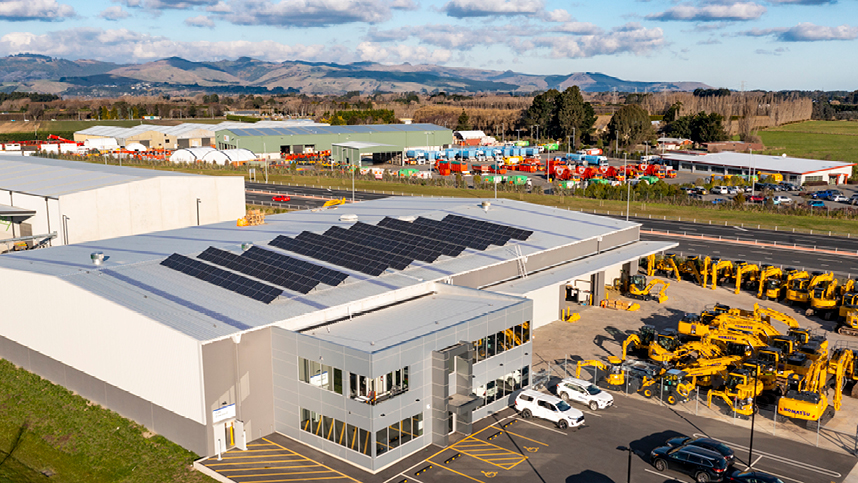Published December 2022
Future-proofing industrial investments with solar energy

|
The collaboration between FortHill Property and Calder Stewart is helping industrial building tenants hedge the uncertainty of volatile energy prices. A changing regulatory environment, requirements to reduce carbon emissions, and the impact of increasing energy costs are putting pressure on businesses. With this in mind, national property and construction business Calder Stewart and the team at FortHill Property have identified a unique opportunity to help manage energy price uncertainty. We are working together to maximise an estimated 250,000m2 of unutilised roof space with a nationwide rollout of solar energy. Future focusThe Ministry for Business, Innovation and Employment’s ‘Building for Climate Change’ programme requires buildings to be designed and constructed to use as little energy and water as practical, leading to reductions in greenhouse gas emissions. Sam Stewart, Calder Stewart’s Manager of New Ventures said, “when looking at increasing energy costs, increased demand on the grid, and volatility of the power market, the rollout of roof solar systems on buildings makes both environmental and commercial sense.” Together, FortHill Property and Calder Stewart have access to 30-40 industrial roof sites across the country. FortHill Property was established by Calder Stewart in 2019 and can work directly with Calder Stewart’s development team to obtain new industrial properties. Because of this relationship the steel structure of the building is strengthened at the time of construction. When FortHill Property acquires a Calder Stewart-built property, large solar systems can be placed on the roof without any upfront capital cost. A powerful initiativeFortHill Property General Manager, Nick Maier said, “this initiative is not only beneficial for investor return by future-proofing the buildings and helping us meet our sustainability targets, but it is also great for tenants by providing price certainty of electricity costs.” In addition, many businesses have clearly defined sustainability goals and solar energy helps these businesses achieve their targets and report on their emissions. For global supplier of construction, and mining equipment Komatsu, the solar business case was clear. Komatsu has a long-term lease with FortHill Property for their Christchurch office in Hornby and their business has a strong daily energy demand curve. The collaboration between Komatsu, FortHill Property and Calder Stewart has seen a 50kw system installed with 133 solar panels to supply up to 50% of Komatsu's annual energy requirements when operating. Calder Stewart EnergySam said, “Calder Stewart has now launched Calder Stewart Energy, a standalone company that designs, installs and manages solar and energy systems". Calder Stewart Energy’s model is flexible enough to work with both building owners such as FortHill Property and business occupants (tenants). In return for the right to use the roof space, FortHill Property gains access to another revenue stream without any upfront capital cost. For building occupants, Sam said, “it’s about helping manage uncertainty around the price of energy. With solar energy, we can offer long-term contracts to match lease terms and help businesses to hedge the uncertainty of price fluctuations.” The plan is to roll out solar panels on roof sites across the country over the course of the next year. Sam says, “it’s a win-win. Solar capitalises on unused space to solve a problem for building occupants, it’s great for the environment and helps us with our sustainability goals”. Risk and opportunityThe project started with a benchmarking study and looked at solar energy projects locally and abroad. The study found the kiwi environment to be unique. With more than 80% of New Zealand’s energy coming from renewable sources, kiwis have been slow adopters of solar. In many European countries, solar panels are installed as a matter of course and in Australia, solar installation is subsidised. Sam made the point, “with no incentives or subsidies available in New Zealand, our plan had to ‘stack up’ commercially from day one.” According to Thinkstep’s report on New Zealand’s built environment, the property and construction industry accounts for approximately 20% of New Zealand’s carbon emissions. Now, more than ever, understanding the risks and opportunities surrounding energy and emissions is critical for both the construction and property investment industries. |